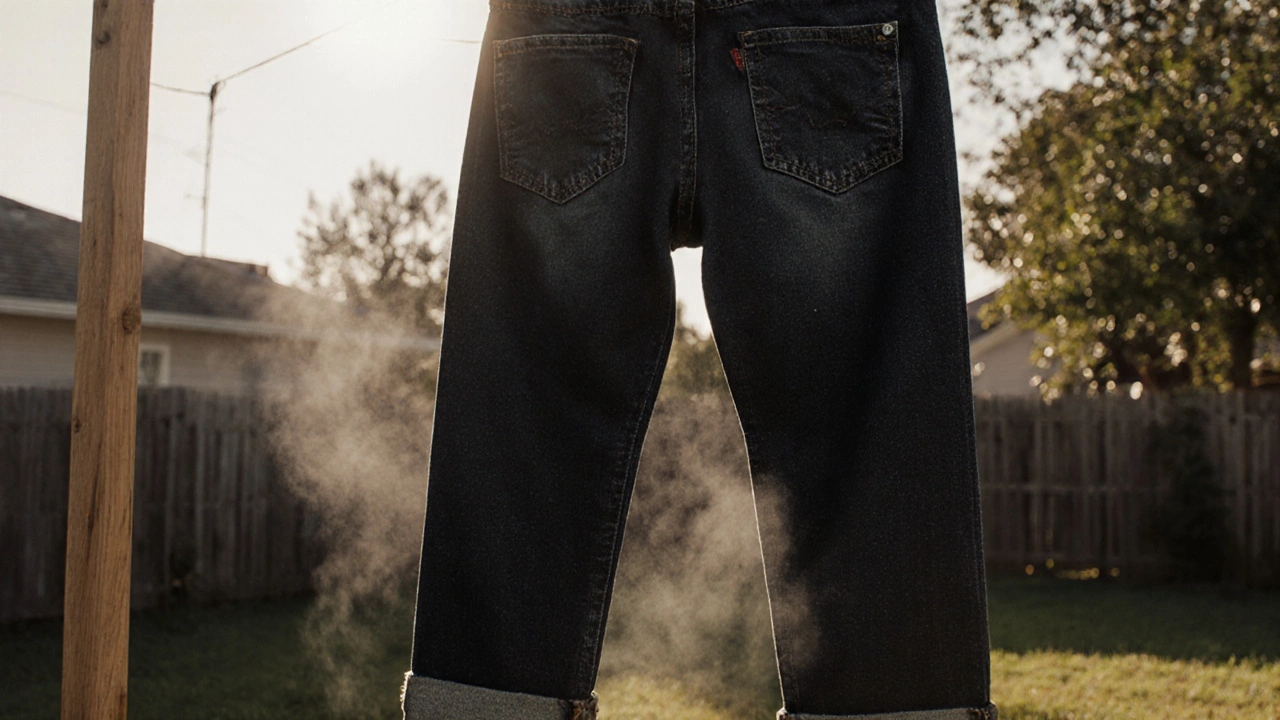Jeans Care: How to Wash, Repair, and Extend the Life of Your Denim
When you buy a good pair of jeans, a durable, everyday garment made from denim fabric, often reinforced with stitching and metal rivets. Also known as denim pants, they’re built to last—but only if you treat them right. Most people wash their jeans too often, too hot, and too rough, which kills the fabric, fades the color, and ruins the fit. You don’t need to wash them after every wear. In fact, waiting a few weeks between washes helps the denim mold to your body and keeps the dye locked in.
Denim washing, the process of cleaning denim without damaging its structure or color. Also known as jeans laundering, it’s not just about soap and water—it’s about temperature, cycle type, and drying method. Always turn your jeans inside out before washing. Use cold water and a gentle cycle. Skip the fabric softener—it coats the fibers and makes them brittle over time. A mild detergent made for dark clothes works best. If your jeans smell but aren’t dirty, hang them outside or toss them in the freezer overnight. The cold kills odor-causing bacteria without water.
Not all jeans are the same. Stretch jeans, denim blended with elastane or spandex for flexibility. Also known as elastic denim, they’re popular for comfort but break down faster than 100% cotton. These need even more care. Heat from the dryer melts the stretch fibers, causing sagging and loss of shape. Always air-dry them flat. If you notice a small tear or loose stitch, fix it early. A needle and thread take five minutes and can save you from buying a new pair. For bigger holes, patch them from the inside with matching denim scraps—no one will see it, but your jeans will last years longer.
Leather patches, rivets, and metal buttons can rust or scratch other clothes if not handled right. Keep them away from bleach and harsh chemicals. If your jeans get stained, spot-clean with a damp cloth and a drop of dish soap. Don’t scrub hard—that frays the threads. And never put your jeans in the dryer on high. Ever. The heat shrinks the fibers, tightens the weave, and makes them stiff. If you must use a dryer, use low heat for just 10 minutes, then hang them to finish drying.
Jeans care isn’t about perfection—it’s about patience. The best-looking jeans aren’t the newest ones. They’re the ones worn in, repaired, and loved. People who treat their denim right end up with pairs that fit like a second skin and tell a story. You’ll find real tips here—not just theory, but what actually works. From fixing frayed hems to reviving faded indigo, the posts below show you how to make your jeans last longer, look better, and feel more like yours.
How Often Should You Wash Jeans? The Real Answer Based on Wear, Fabric, and Lifestyle
Washing jeans too often ruins their fit and color. Learn the real rules for when to wash based on wear, fabric type, and odor-not just how many times you’ve worn them.
Read more